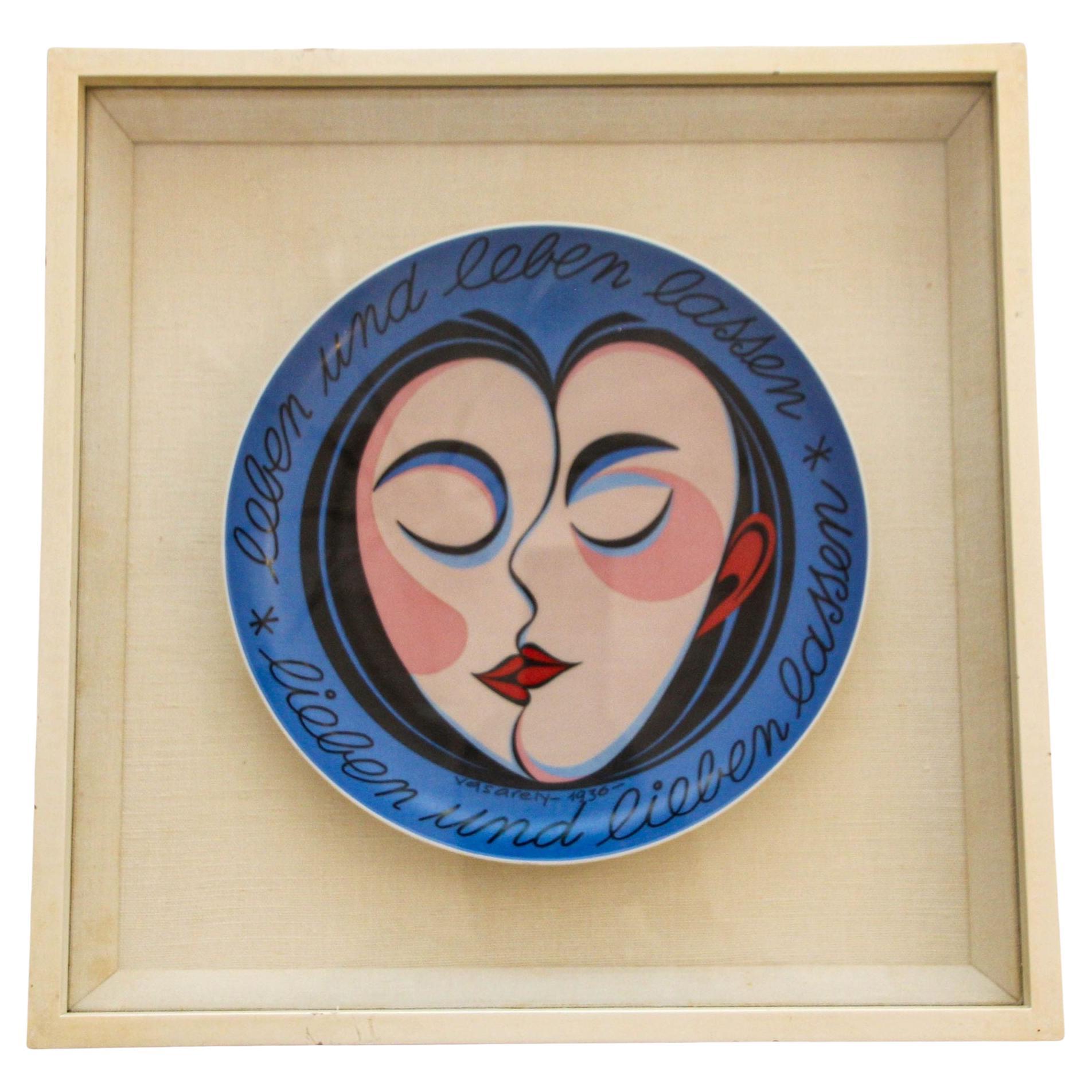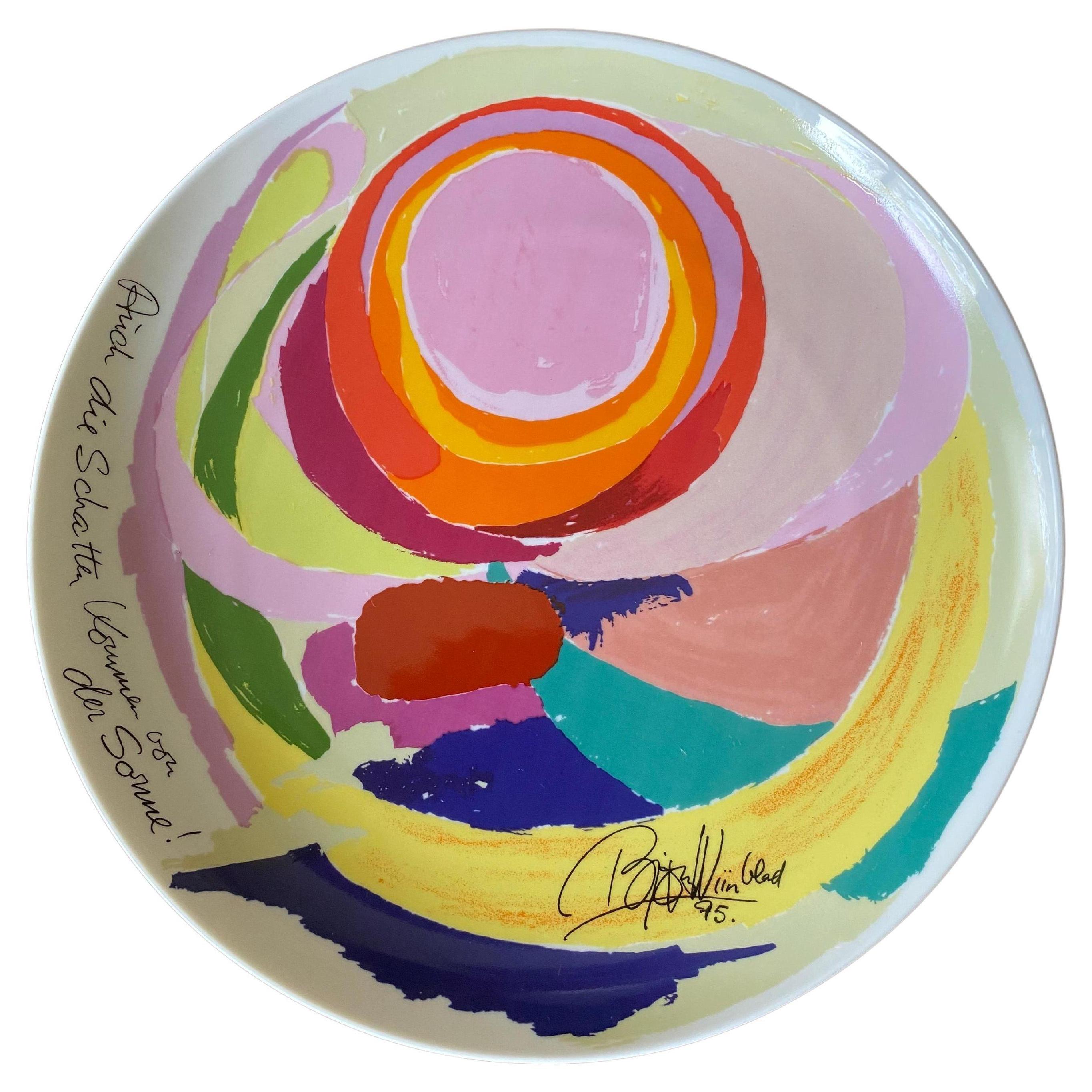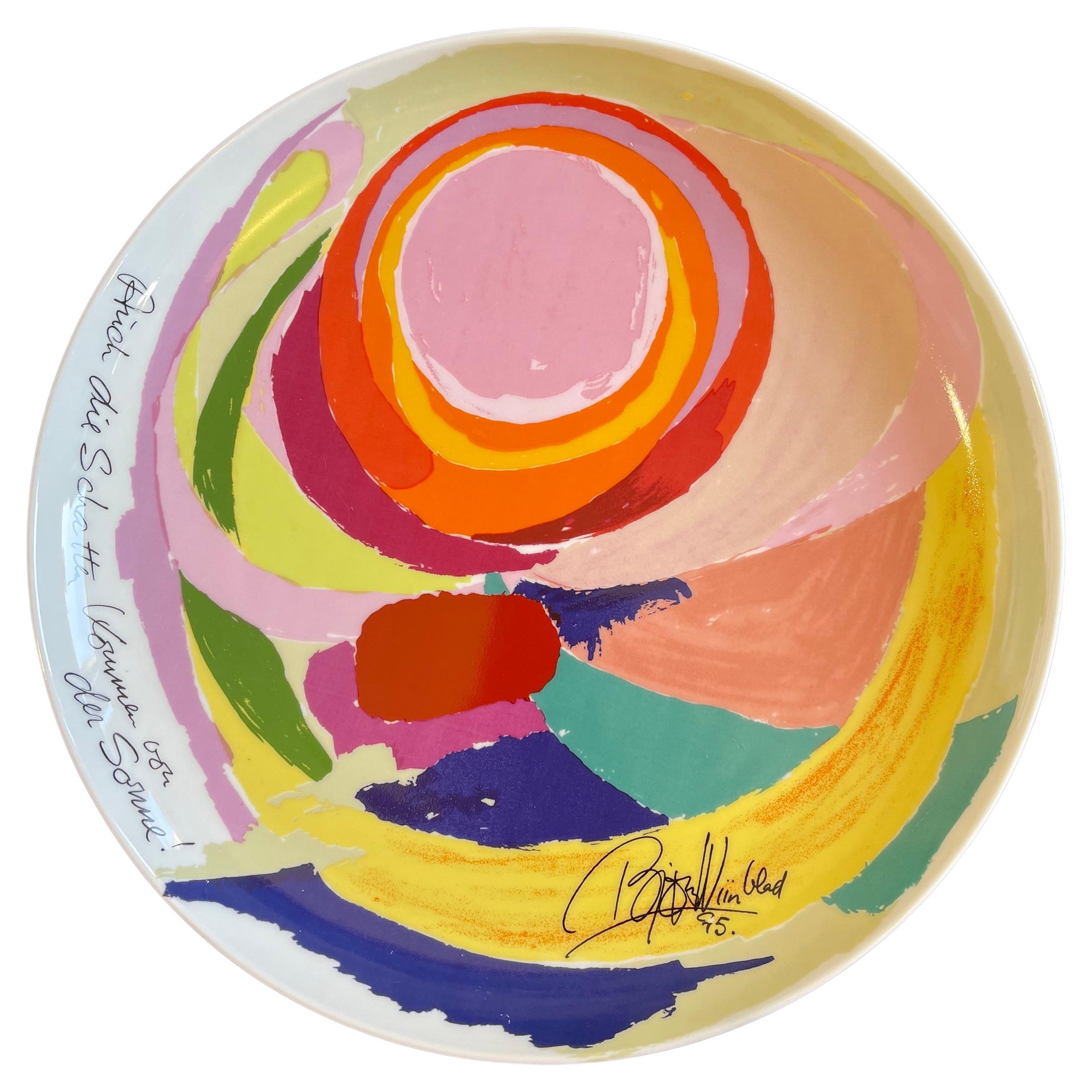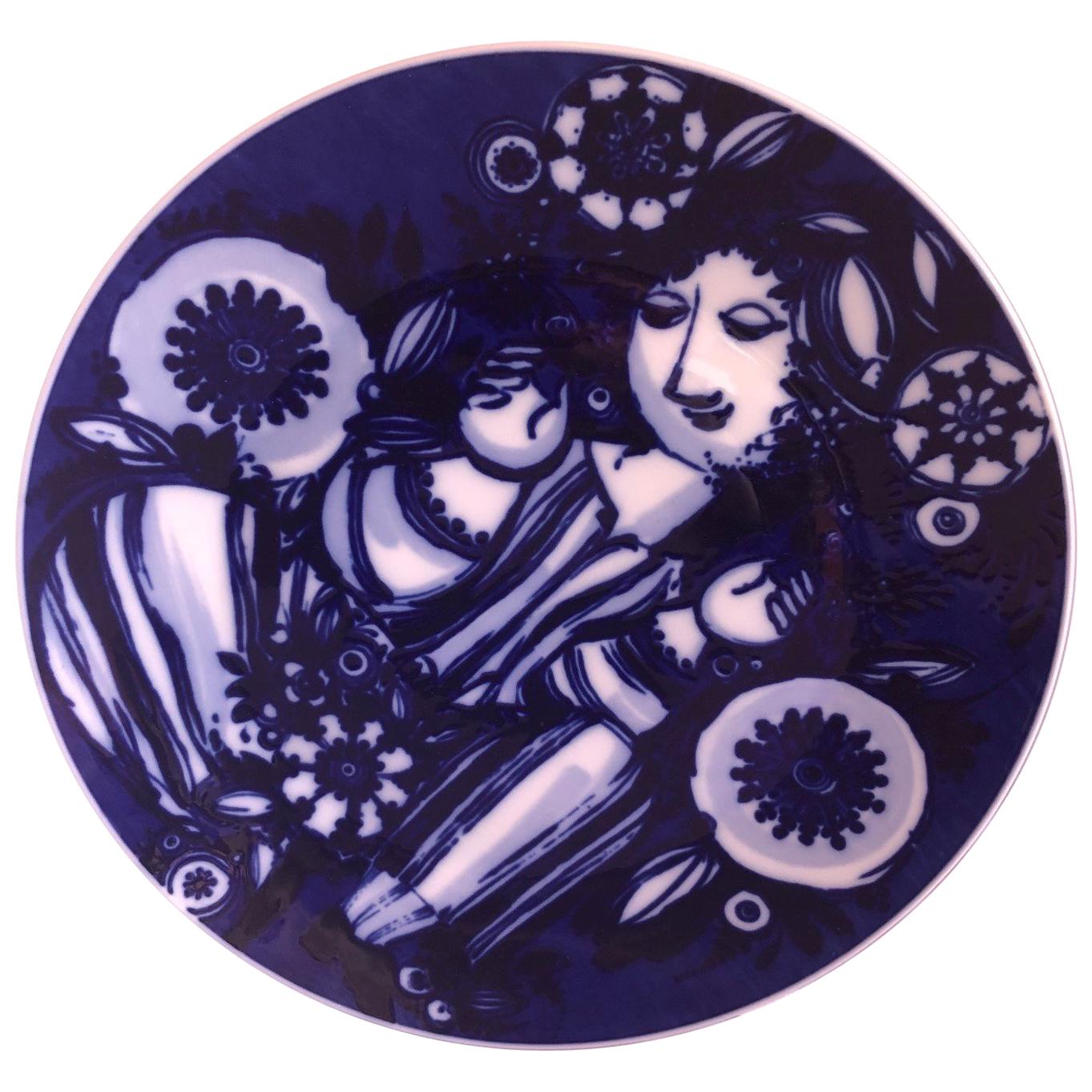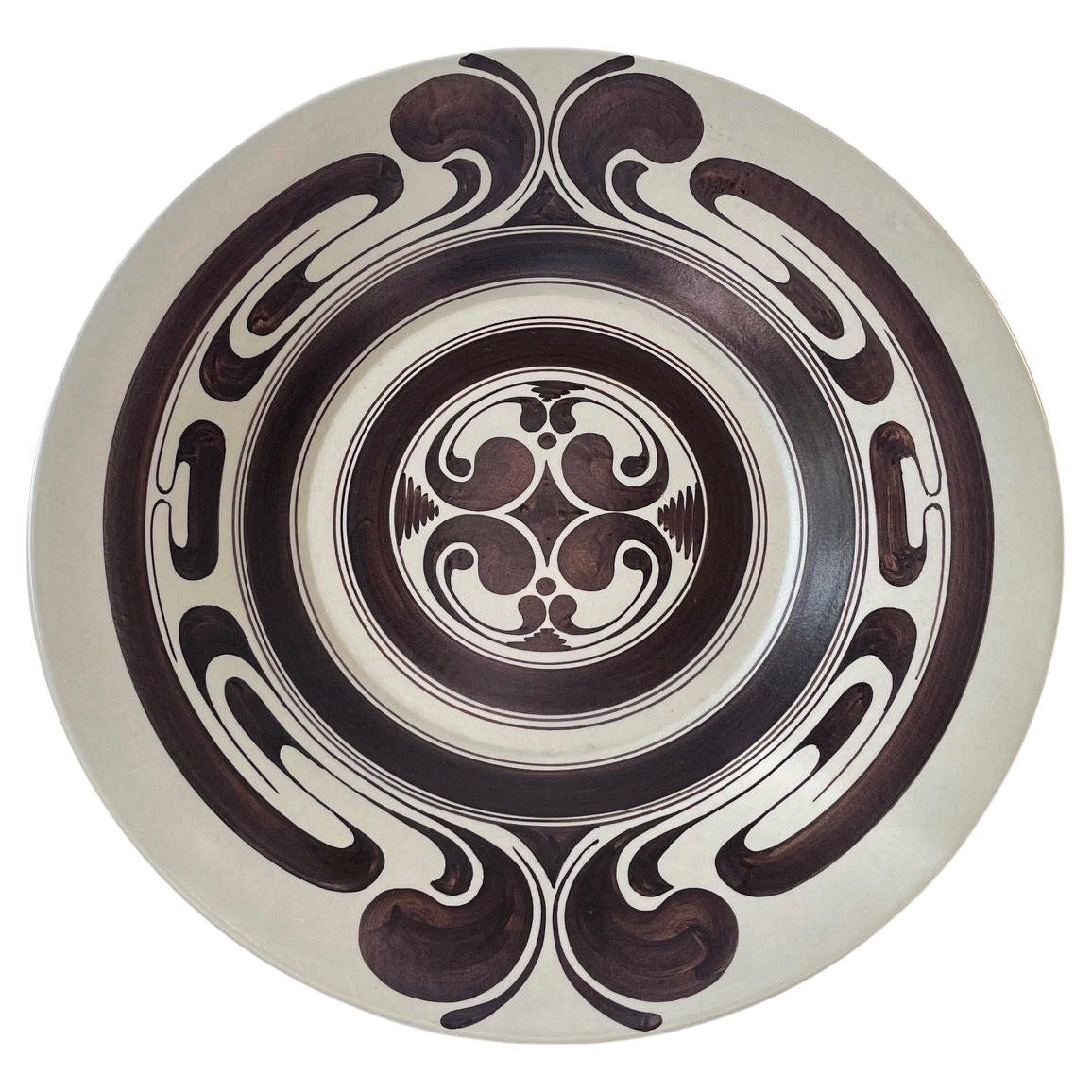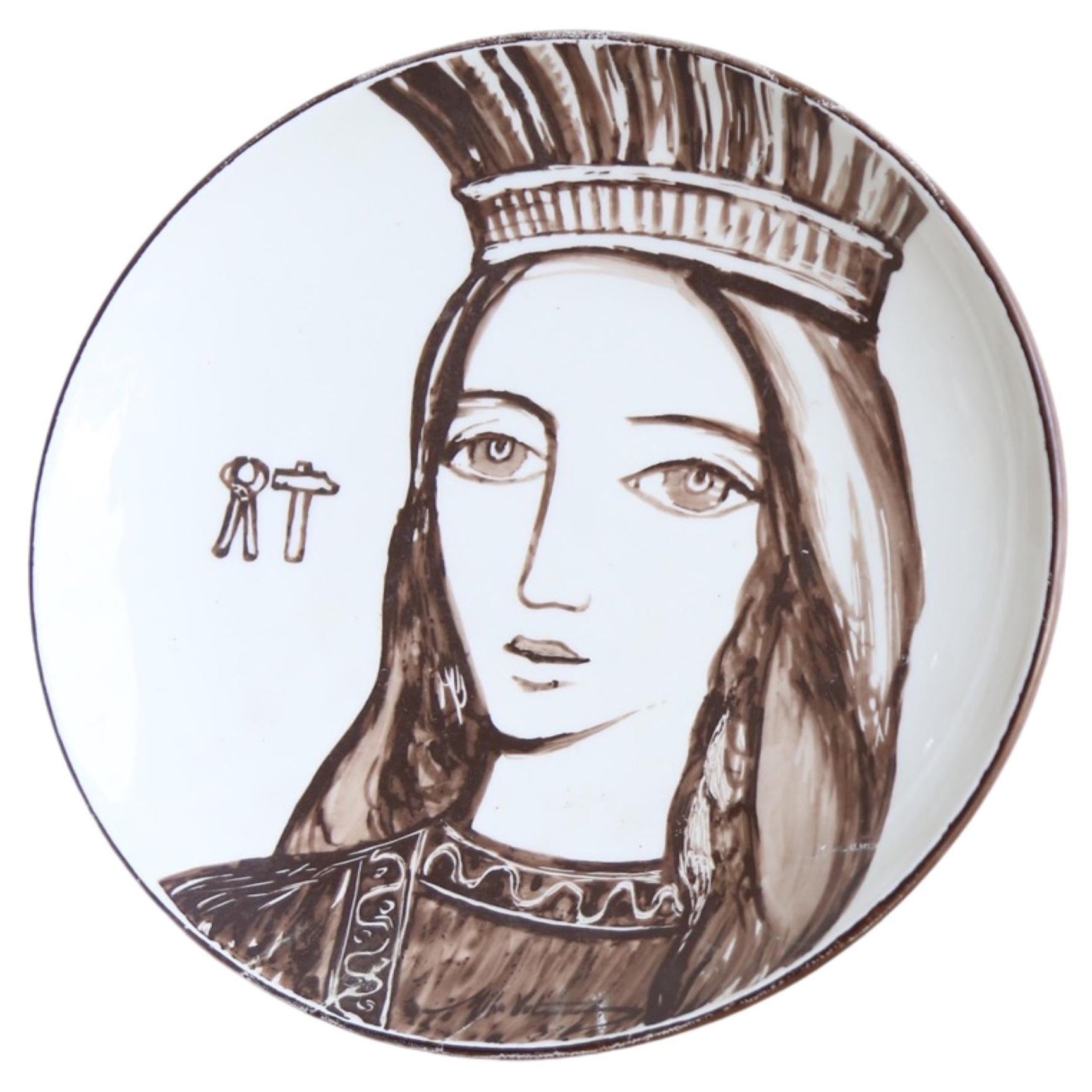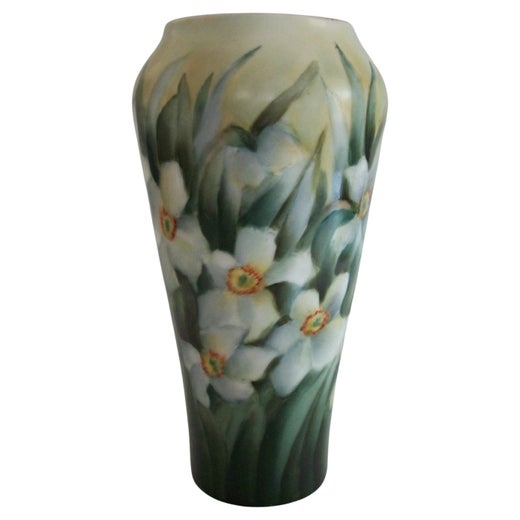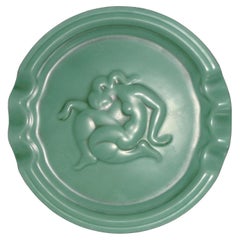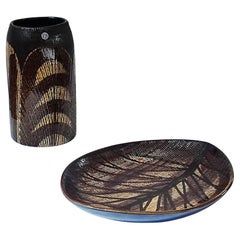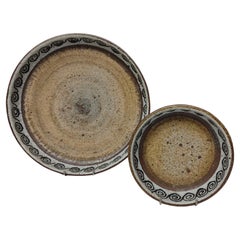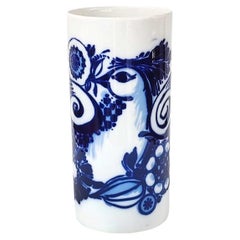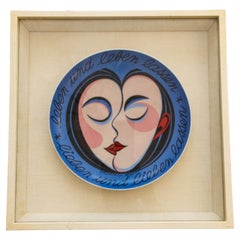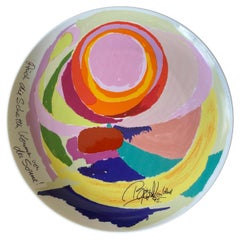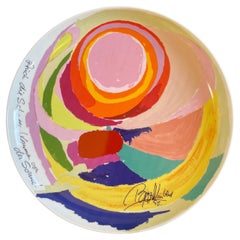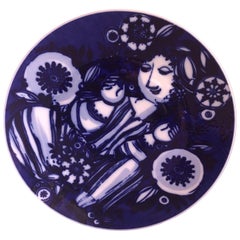Victor Vasarely Rosenthal Studio Line Limited Edition Porcelain Plate
About the Item
Rosenthal
While the Rosenthal Porcelain Factory grew from humble decorating roots — as many pottery companies do — it eventually built a list of universally revered designer and artist partners that included Andy Warhol and Salvador Dalí. And after securing an enviable position as a top manufacturer of serveware and dominating the porcelain and bone china markets, Rosenthal expanded into furniture production, working with influential designers Verner Panton, Luigi Colani and Günther Ferdinand Ris and Herbert Selldorf.
German-born Jewish businessman Philipp Rosenthal founded the company in 1879 in Bavaria. It began as his modest workshop where he painted porcelain and encountered success with porcelain ashtrays. Rosenthal hired the best designers and clay modelers he could find. Adolf Oppel designed figurative Art Nouveau pieces, while Eleonore (Lore) Friedrich-Gronau produced decorative objects, namely her graceful porcelain dancer figurines, for the company.
Dinnerware, though, would be a Rosenthal mainstay. Between 1904 and 1910, Rosenthal produced its renowned dinnerware lines such as Donatello, Darmstadt and Isolde. These were introduced as unornamented white pieces — only later were they given their underglaze designs.
Rosenthal founder Philipp, a Catholic of Jewish ancestry, resigned in 1934 as the company’s president due to pressures owing to discriminatory German laws that took shape during the rise of the Nazi regime. Rosenthal died in 1937, and the family fled to America. The company would not regain its footing until 1950 when Rosenthal’s son, Philip, joined the firm and, in 1958, became chairman and dubbed Germany’s “China King.” At its peak, the company had 10,000 employees.
In the 1950s, Rosenthal’s modernist dinnerware was a significant part of the brand’s offerings, and by 1961 they introduced the famed Rosenthal Studio Line. Although furniture designers and ceramicists would lead the list of individuals working with Rosenthal — among them Tapio Wirkkala, Max Weber and Lisa Larson — the company eventually reached out to fine artists, not only Dalí and Warhol but Sandro Chia and Kenny Scharf. Rosenthal also collaborated with fashion designers Gianni Versace and Donatella Versace.
In a daring move in 1972, the company diversified into furniture, collaborating with some of the giants of mid-century modern design. The revolutionary Sunball chair, an icon of Space Age seating crafted by Selldorf and Ris, was among Rosenthal’s stellar successes in this venture.
On 1stDibs, find vintage Rosenthal ceramics, porcelain, tableware, seating and more.
- ShippingRetrieving quote...Shipping from: Bochum, Germany
- Return Policy
More From This Seller
View AllVintage 1930s Swedish Art Deco Decorative Bowls
Ceramic
Mid-20th Century Swedish Mid-Century Modern Vases
Ceramic
Vintage 1970s Swedish Scandinavian Modern Decorative Dishes and Vide-Poche
Stoneware
Vintage 1970s German Mid-Century Modern Porcelain
Porcelain
Vintage 1980s German Mid-Century Modern Vases
Porcelain
Vintage 1960s German Mid-Century Modern Vases
Porcelain
You May Also Like
Late 20th Century German Post-Modern Decorative Art
Porcelain
Vintage 1970s German Mid-Century Modern Shelves and Wall Cabinets
Porcelain
Mid-20th Century German Mid-Century Modern Decorative Art
Porcelain
Mid-20th Century German Mid-Century Modern Porcelain
Porcelain
Vintage 1970s German Mid-Century Modern Decorative Dishes and Vide-Poche
Ceramic
Vintage 1960s Italian Mid-Century Modern Ceramics
Ceramic
